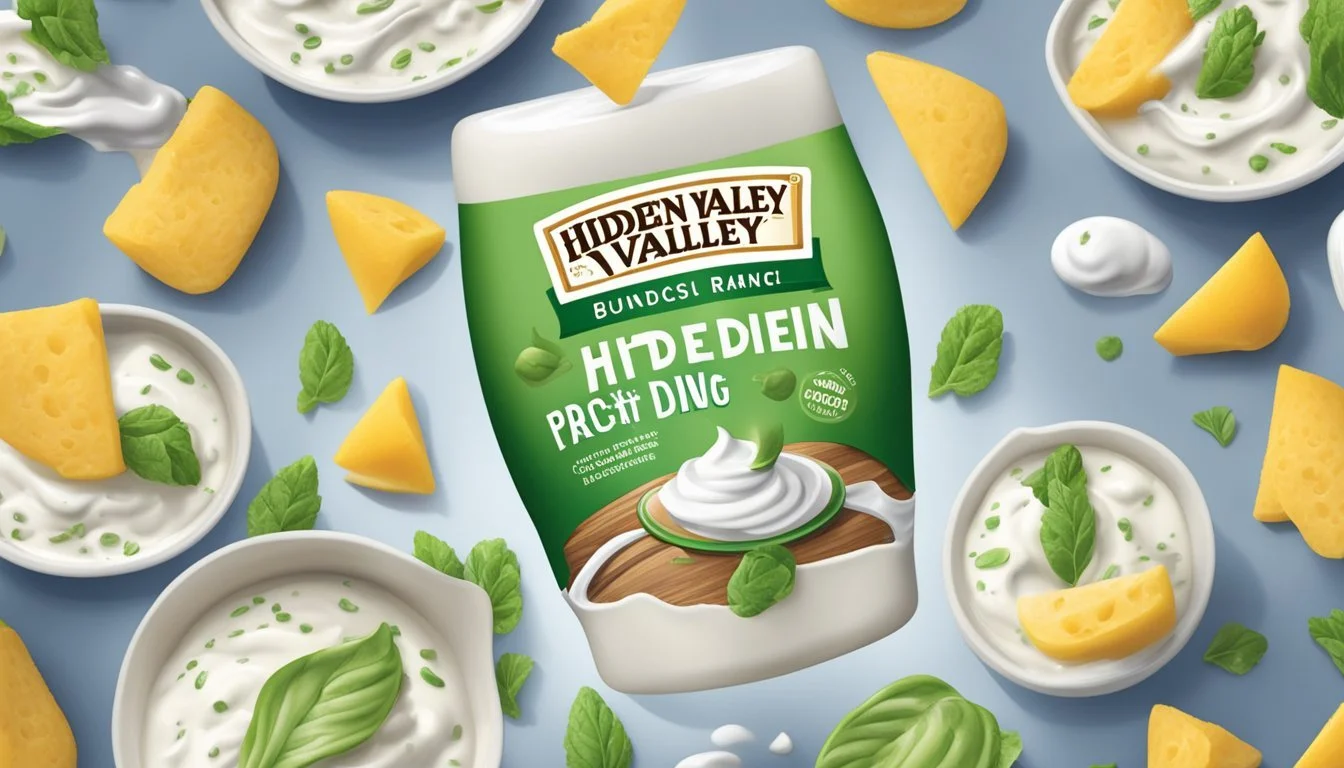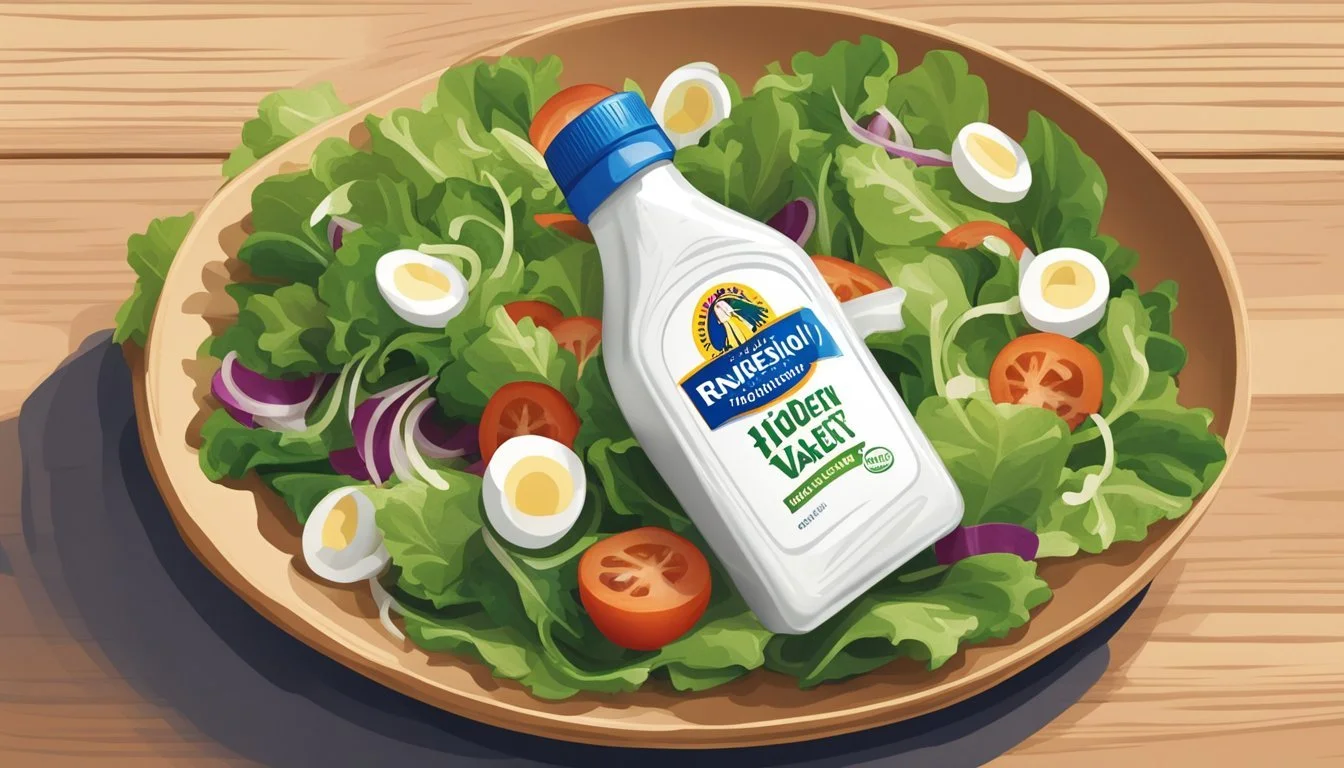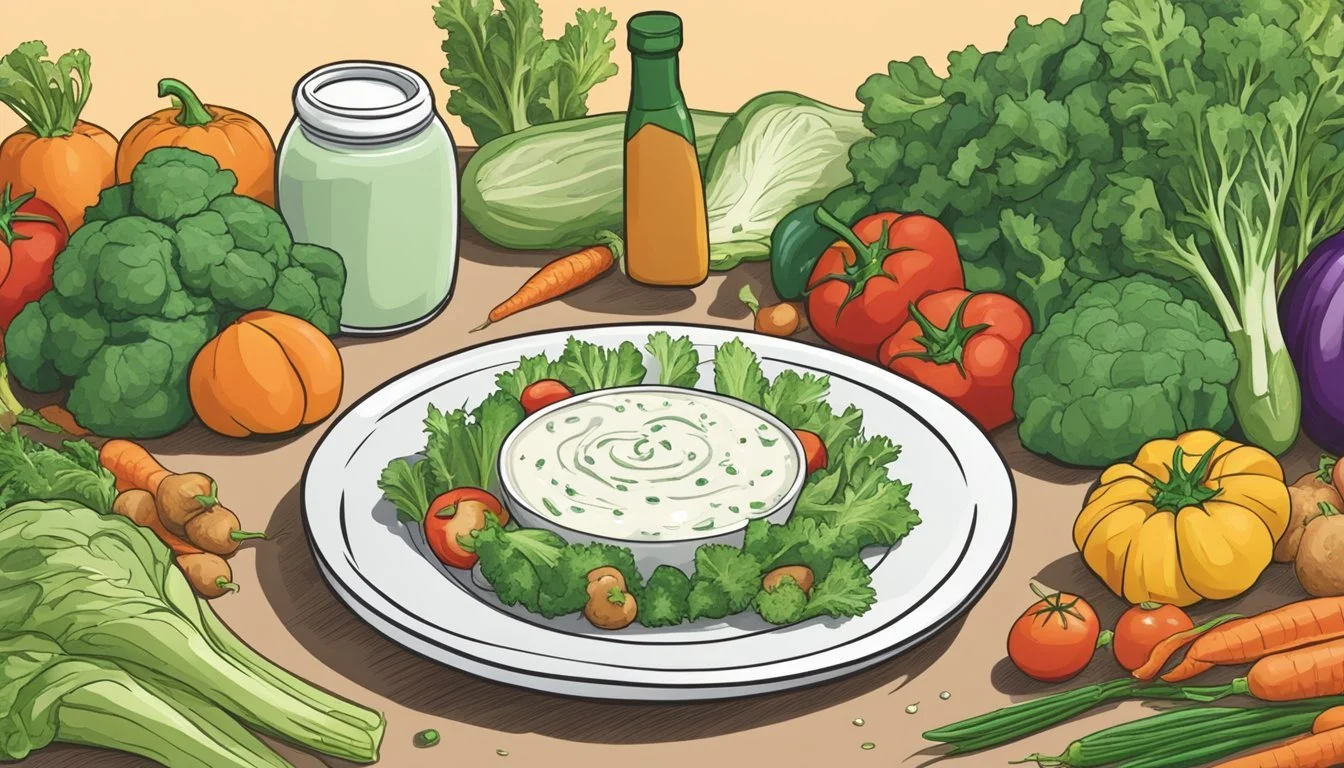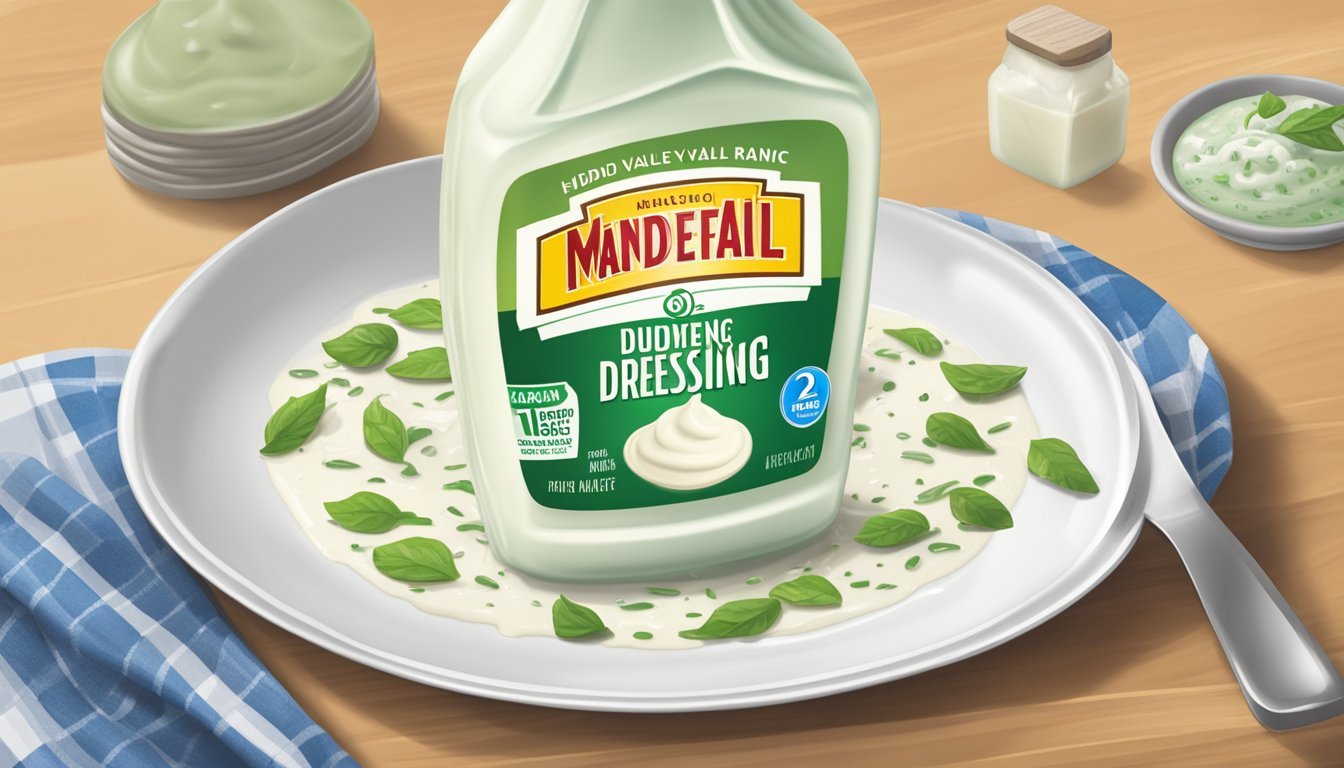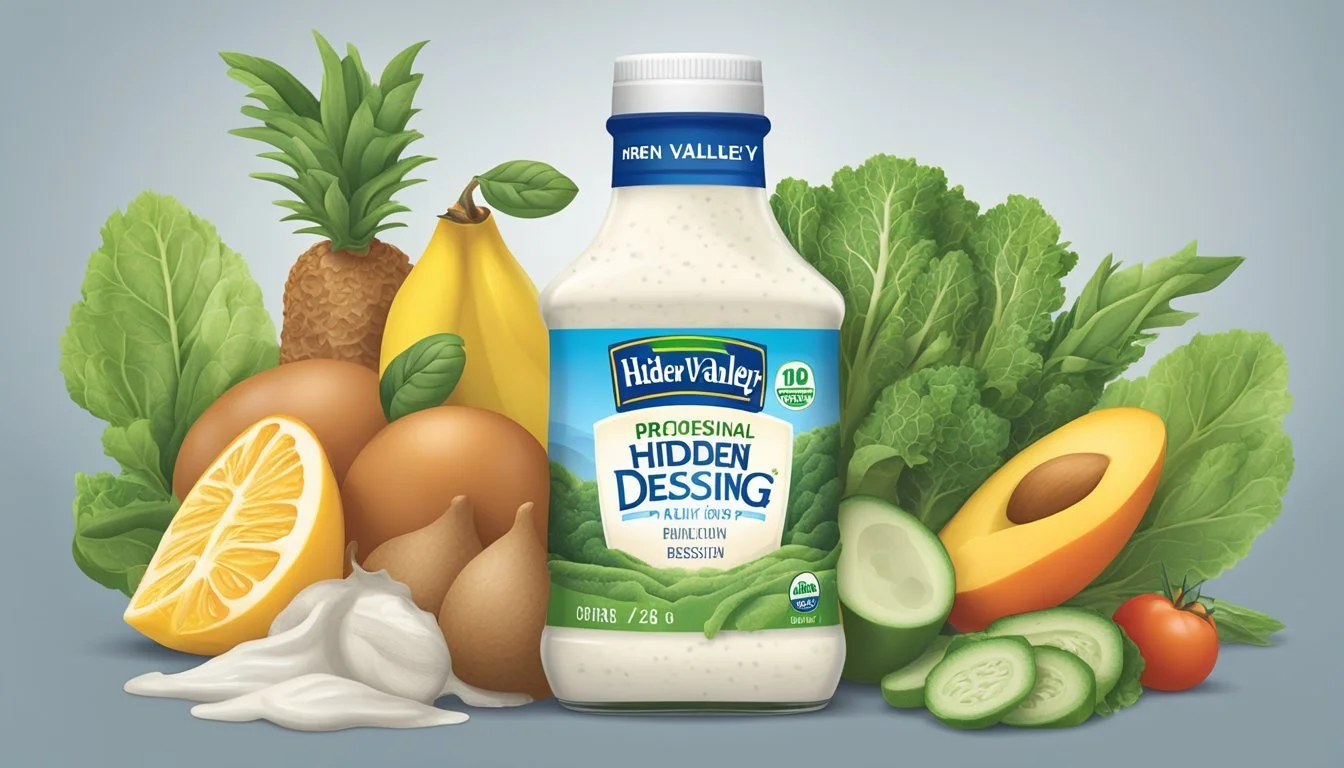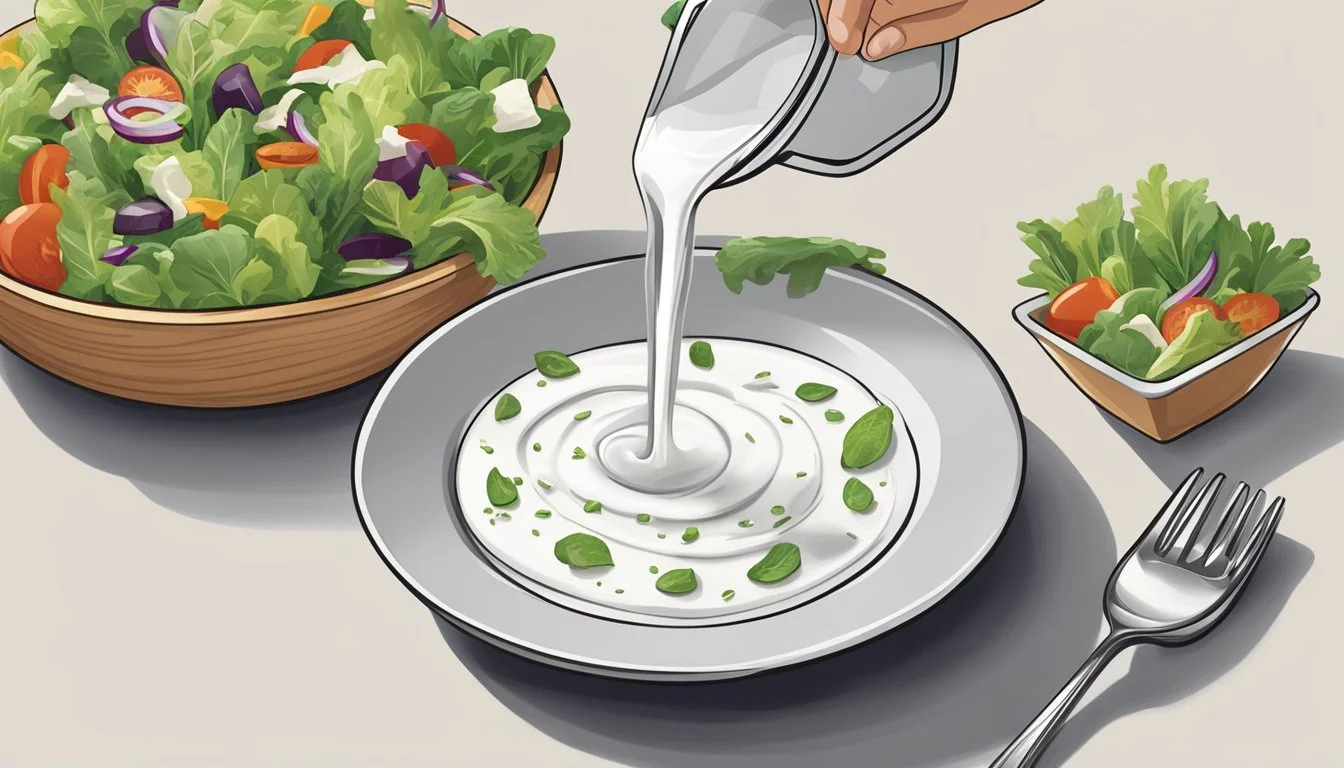How much Hidden Valley Ranch Dressing Per Day Is Too Much?
Understanding Safe Consumption Limits
When it comes to salad dressings, Hidden Valley Ranch is a household name, renowned for its creamy texture and blend of herbs and spices. Consuming Hidden Valley Ranch in moderation can add flavor to a variety of foods, from salads to snacks. However, the nutritional content of ranch dressing, particularly its fat, calorie, and sodium levels, raises questions about how much is too much in a day.
Health experts often stress the importance of balance and moderation in our diets. While the occasional serving of ranch can fit into a healthy eating pattern, excessive intake could contribute to an increase in daily saturated fat and sodium, which are linked with health issues if consumed in large quantities over time.
Given that Hidden Valley Ranch contains calories, fat, and sodium, individuals should consider the current dietary recommendations and how ranch dressing fits within those guidelines. This pertains especially to those who are mindful of their calorie intake or are monitoring their heart health, for whom the amount of ranch dressing consumed daily may need more careful consideration.
Understanding Ranch Dressing
Ranch dressing is a staple condiment in many households, renowned for its creamy texture and blend of herbs and spices. Hidden Valley Ranch, a prominent brand, popularized this dressing, which is commonly used on salads, as a dip, or a topping for a variety of foods.
The primary ingredients in ranch dressing include mayonnaise, sour cream, or buttermilk. These are blended with seasonings such as garlic powder, onion powder, salt, sugar, and an array of herbs, including chives, parsley, and dill. This combination results in a rich and tangy flavor profile that is both versatile and widely appealing.
The classic Hidden Valley Ranch Dressing, dubbed Creamy Original Ranch, contains a specific balance of these ingredients. However, variations exist, such as Classic Ranch and Spicy Ranch, offering different intensities and nuances. For those looking to customize their dressings, homemade ranch is an option, allowing for adjustments in the level of garlic, onion, or herbs used.
Regarding seasoning mixtures, 2 tablespoons of a homemade ranch seasoning blend are approximately equivalent to one Hidden Valley Ranch packet. For a homemade ranch dressing:
Mix 1 cup of buttermilk with 1 cup of mayonnaise.
Stir in 2 tablespoons of the seasoning blend.
Refrigerate to thicken and enhance flavors.
In addition to dressing, ranch can be turned into a thicker ranch dip for snacks, often by incorporating less buttermilk or using sour cream for consistency.
Ranch's popularity is undoubted, yet it should be consumed in moderation due to its calorie and fat content. Being informed about its components can help individuals enjoy Hidden Valley Ranch Dressing within a balanced diet.
Nutritional Composition of Ranch Dressing
Ranch dressing is a common condiment that contains a significant amount of calories and fats, typically seasoned with a blend of herbs, spices, and various additives for flavor and preservation. Below is a detailed breakdown of its nutritional components.
Calories and Fats
A standard serving size of Hidden Valley Ranch dressing, which is 2 tablespoons (approximately 30 ml), generally contains around 130 to 140 calories. The majority of these calories, up to 90%, are derived from fats.
Total Fat: 13-14g
Saturated Fat: ~2.1g (10-11% Daily Value)
Trans Fat: 0.1g
Polyunsaturated Fat: ~7.7g
Monounsaturated Fat: ~2.8g
These fats contribute to the creamy texture and flavor that ranch dressing is known for.
Sodium and Seasonings
Ranch dressing is also known for its savory taste, which is often achieved through various seasonings and a notable amount of sodium.
Sodium: Levels can vary among brands and types, potentially contributing to a significant portion of the recommended daily intake.
Seasonings: A mix of garlic, onion, and herbs, combined with natural flavors and monosodium glutamate (MSG), enhance the dressing's palatable profile.
The sodium content and addition of seasonings like MSG should be considered when determining the appropriate portion size.
Additives and Preservatives
To extend shelf life and maintain consistency, Hidden Valley Ranch dressing includes several additives and preservatives. These may consist of:
Starches: Such as modified food starch, to stabilize and thicken the dressing.
Sugars: Including maltodextrin and corn syrup, which may be used to balance flavors.
Acidifiers: Such as lactic acid and citric acid, are used to ensure the right level of acidity for both taste and preservation.
Thickeners and Gums: Guar gum is often used as a thickening agent.
Ingredients like calcium lactate and calcium stearate might also be present to serve functional roles in maintaining product quality.
Health Considerations
When incorporating Hidden Valley Ranch dressing into a diet, it's crucial to consider its impact on heart health due to sodium and fat content, potential allergens and sensitivities, as well as implications for weight management.
Heart Health and Sodium Intake
Hidden Valley Ranch dressing contains significant sodium levels, with a two-tablespoon serving providing up to 310mg of sodium. The American Heart Association recommends limiting sodium intake to less than 2,300mg per day, moving toward an ideal limit of no more than 1,500mg per day for most adults, in order to maintain optimal cardiovascular health. High sodium consumption can contribute to hypertension, a risk factor for heart disease. Therefore, moderation is key when consuming ranch dressing to avoid excessive sodium intake which can lead to cardiovascular concerns.
Allergens and Sensitivities
Hidden Valley Ranch dressings may contain allergens such as milk products which can affect individuals with lactose intolerance, causing discomfort and symptoms like nausea. Additionally, the presence of MSG (monosodium glutamate) in some dressings can trigger sensitivities in certain people, leading to symptoms like headaches. Individuals with gluten allergies or sensitivities should look for variants of ranch dressings that are labeled gluten-free. Consumers are advised to read ingredient labels carefully to avoid triggering allergies or sensitivities.
Weight Management
Ranch dressing is high in calories mostly from fat and particularly saturated fat. A 2-tablespoon serving contains about 140 calories with 130 of these calories coming from fats. Since fats hold 9 calories per gram, they are more calorie-dense than proteins or carbohydrates, which both contain 4 calories per gram. Consistent overconsumption of high-calorie dressings like ranch can contribute to weight gain and obesity. Individuals concerned with weight management should be mindful of their serving sizes or opt for lower-calorie versions of the dressing.
Recommended Daily Intake
When considering the intake of Hidden Valley Ranch dressing, it is critical to look at both the serving size and the context of an individual's overall diet. A typical serving size for salad dressings, including ranch, is 2 tablespoons.
One must pay close attention to calories. For a 2,000-calorie daily diet, the American Heart Association suggests using dressings sparingly to avoid excessive calorie consumption, which can lead to weight gain and related health issues.
Table: Nutrient Breakdown per 2 Tablespoon Serving
Nutrient Amount % Daily Value* Calories 140 7% Total Fat 14g 18% Saturated Fat 2g 10% Sodium 260mg 11% Total Carbohydrates 1g <1% Sugars 1g - Protein 0g 0%
*Percentages are based on a 2,000 calorie diet.
It's noted that Hidden Valley Ranch dressing contains 14g of fat, which represents 18% of the recommended daily value for total fat based on a 2,000-calorie diet. Sodium content is 260mg per serving, which is 11% of the daily value – it's crucial to monitor sodium intake, as high consumption can increase the risk of hypertension.
Individuals should ideally balance their consumption of dressings like Hidden Valley Ranch with their daily nutritional needs and the recommendations of health organizations to avoid excessive intake. Moderation is key.
Ranch Dressing in Cooking
Ranch dressing, celebrated for its creamy texture and tangy flavor, has transcended its role as a mere salad dressing to become a versatile ingredient in various dishes. Its application ranges from simple dips to complex sauces, enhancing the flavors of numerous foods like chicken, pizza, and vegetables.
Recipes and Pairings
Ranch dressing is a popular choice for chicken wings, often served as a dip or a marinade to provide a creamy counterpoint to the wings' crispy texture. Salads benefit from its flavor, with ranch dressing being a go-to choice for a quick and satisfying dressing. When it comes to vegetables, ranch can act both as a dip for raw veggies like carrots and celery or as a seasoning for roasted ones, offering a herby kick.
For a newer twist, chefs drizzle ranch over pizza, especially flavors that marry well with its creamy base, such as buffalo chicken. Pasta dishes sometimes incorporate ranch dressing either as a mix-in to create a creamy sauce or as a flavor enhancer in pasta salads.
In regard to fish and steak, ranch can serve as a marinade that imparts moisture and tanginess, ensuring the meat remains succulent. Fries, too, are often accompanied by ranch dressing as a preferred dip over traditional ketchup in many places.
Eggs, particularly in dishes like omelets or deviled eggs, receive a flavor uplift when ranch is added to the mix, blending well with the eggs' natural richness.
Chicken: Wings, salads, and sandwiches
Vegetables: Dip, roasted, steamed
Fish: Marinade, baked, grilled
Pizza: Drizzled on top, used in sauces
Pasta: Creamy ranch pasta, pasta salads
Steak: Marinade, sauce on the side
Salads: Classic ranch dressing, ranch potato salad
Dip: For snacks such as fries, chips
Fries: As an alternative to ketchup
Eggs: In omelets, deviled eggs, scrambles
Alternatives and Substitutions
For those seeking a healthier option or a different flavor profile, Greek yogurt can replace mayonnaise in ranch dressing to reduce calories and add protein while keeping the creamy consistency. Additionally, one can substitute buttermilk with a blend of milk and lemon juice or vinegar to achieve a similar tanginess if buttermilk is not available.
Creating a homemade ranch seasoning allows for adjustments in the mix to cater to personal preferences or dietary restrictions, and can be stored for later use in any recipes calling for ranch flavor. To cater to gluten-free diets or personal tastes, one should check the seasoning mix used, as not all are gluten-free.
Greek yogurt: Can replace mayonnaise for a healthier version
Lemon juice or vinegar: Can be mixed with milk to substitute for buttermilk
Homemade seasonings: Allows for customized flavor adjustments
Gluten-free options: Available for those with dietary restrictions
Ranch dressing's incorporation into cooking demonstrates its flexibility and popular demand in a range of dishes, making it a valuable ingredient in both home and restaurant kitchens.
Storing Ranch Dressing
Proper storage maximizes the shelf life of ranch dressing, whether it's homemade or store-bought. Understanding the differences in shelf life between these two types is crucial for maintaining flavor and food safety.
Homemade vs. Store-Bought
Homemade ranch dressing typically uses fresh ingredients like buttermilk and may include fresh herbs or fresh garlic. These ingredients are less stable than their processed counterparts, so homemade ranch should be stored in an airtight container in the refrigerator and used within 1 week.
On the other hand, store-bought bottled ranch, like Hidden Valley Ranch, generally contains preservatives that extend its shelf life. An unopened bottle can be kept in the refrigerator for 2 to 3 months beyond the printed best-by date. Once opened, the consumer should aim to use it within 1 month.
Shelf Life
Shelf life varies depending on whether the ranch dressing is homemade or commercially produced. The information below presents a clear guide:
Homemade Ranch:
Ingredients: Fresh garlic, buttermilk powder, fresh herbs.
Storage: Refrigerated in an airtight container.
Duration: Use within 1 week.
Store-Bought Bottle (e.g., Hidden Valley):
Unopened:
Storage: Refrigerated.
Duration: 2 to 3 months beyond the best-by date.
Opened:
Storage: Refrigerated.
Duration: Within 1 month for optimal quality.
Dry Mix Packets (e.g., Hidden Valley):
Unopened:
Storage: Cool, dry place.
Duration: Up to 12 months.
Opened:
Storage: Sealed and dry.
Duration: Use within a few weeks.
Frequently Asked Questions
In addressing the daily consumption of Hidden Valley ranch dressing, it's essential to consider both the ingredients and nutritional content, as well as appropriate usage and serving suggestions. These factors play a crucial role in determining how much ranch dressing should be consumed.
Ingredients and Nutrition
Hidden Valley Original Ranch dressing is composed primarily of buttermilk, with a flavor profile that includes garlic, onion, herbs, and spices. When considering nutritional content, one should be aware that ranch dressings generally contain calories, fat, and sodium. Here is a brief overview of the typical nutritional content per serving size of Hidden Valley Original Ranch:
Calories: Approximately 140 kcal
Total Fat: 14g
Sodium: 260mg
Consumers are advised to refer to the product's nutritional label for the most accurate information, as formulations and nutritional contents may vary.
Usage and Serving Suggestions
A standard serving size for salad dressings like Hidden Valley Original Ranch is typically 2 tablespoons. When pairing with foods such as salad or pita bread, it is sensible to adhere to this suggested serving size to maintain a balanced diet.
For a single batch of homemade ranch dressing using a seasoning mix, using about 2 tablespoons of the mix is recommended for optimal flavor equivalence. When used as a dip, portion control is recommended to manage intake.
One’s individual dietary needs should guide daily consumption of ranch dressing. It's beneficial to consult with a nutritionist or healthcare provider for personalized dietary advice.

